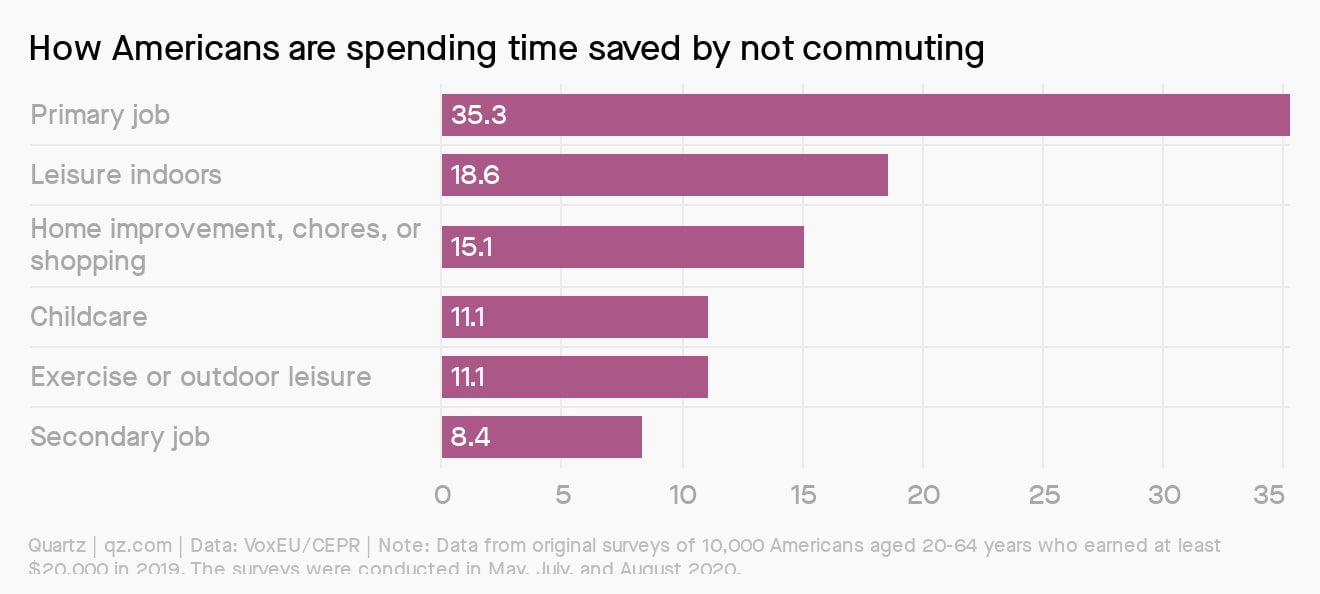The Memo: The White House’s lessons for workplaces on what not to do
To modern workers everywhere,

To modern workers everywhere,
There are a handful of ways that workplaces can help keep employees safe in a pandemic—and Donald Trump’s White House failed miserably at all of them.
Let’s start with mask-wearing, something the US president is reported to have actively discouraged around the office. In meetings, he told staff donning masks to “get that thing off,” the New York Times reports, citing an unnamed administration official.
Then there’s the testing. Daily rapid tests, like the kind the White House relied upon, are meant to help prevent people infected with Covid-19 from entering the workplace. But rapid tests can produce false negatives, especially early on in the disease. White House press secretary Kayleigh McEnany announced Monday that she had tested positive for Covid-19 after testing negative every day since Thursday. She was still asymptomatic at the time of her diagnosis.
Communication is another vital piece of the safety protocol. Yet it took more than 72 hours after Trump’s diagnosis became public for the White House Management Office to finally send out an email to staff, reminding them to stay home if they had symptoms and to talk to their supervisor if they prefered to work remotely.
And while the White House says it is initiating contact tracing according to guidelines from the Centers for Disease Control, CNN surveyed more than a half-dozen people who had “gotten little or no outreach from the White House since coming into proximity with the first couple or their inner circle in the days since the diagnoses.”
The White House’s handling of the outbreak is indicative of an employer who is utterly indifferent to employee health and safety. The still-contagious commander in chief created an environment that put not only his closest aids at risk, but also those in the East Wing residence who work as maids, butlers, housekeepers, cooks, and maintenance staff, as well as the janitors, administrative assistants, and other support staff in the West Wing.
It might not be shocking, but it’s still callous and irresponsible. Other employers trying to figure out how to prevent the spread of coronavirus on their own premises now have an excellent lesson in what not to do.—Sarah Todd

Five things we learned this week
One in four women are considering a career step-back because of Covid-19. Sound the alarm.
Coinbase took a stand against employee activism. If CEO Brian Armstrong was hoping the policy would settle the debate about politics at work, he was wrong.
Just buy a dang printer already. You know you want one.
A QR code could decide whether you go back to the office. An app allows workers who test negative for Covid-19 to receive a “digital health pass” that employers can scan at the door.
Covid-19 rates for Amazon’s US frontline workers are lower than the general population averages in every state except West Virginia. Maybe that’s why the company shared the data.
It’s a fact
The time Americans used to spend commuting is now spent working. Maybe it’s time to give yourself a virtual commute?

30-second case study
Each year, KPMG invites CEOs across the Fortune 1000 to nominate female executives from their organizations to participate in a women’s leadership summit. These women are one or two steps away from the C-suite—in the five years since the summit began, 20% of the participants have been promoted to C-level roles. They are high achievers. But most of them have felt at some point in their career that their success was not deserved.
In a new survey of 750 summit alumni, 75% of the women reported they have personally experienced imposter syndrome, believing their success had more to do with luck than with their own distinct skills and capabilities. Most often, the feeling accompanied a new leadership role, but just under half the women attributed their imposter syndrome struggles to the fact that they “never expected to reach the level of success they have achieved,” KPMG found.
What could account for such pervasiveness? As the report notes, many of the women described “being raised in households with clearly defined gender roles,” suggesting they’ve had to adjust their own expectations of themselves as they advanced in the workplace. And a third of the women said they identified with imposter syndrome “because they did not know others in a similar place to them either personally or professionally.”
The takeaway: It’s lonely at the top, and all the more when you’re part of a group that’s underrepresented in leadership. KPMG’s survey points to a handful of factors that can help smooth the way for women as they move up in their careers. Nearly half the women cited a supportive boss as the top reason they were able to tamp down feelings of imposter syndrome. And more than a quarter of the women said that being part of a collaborative team and being rewarded fairly creates a sense of belonging or of being valued that counters imposter syndrome.
It also should help as men and women alike keep in mind the pervasiveness of imposter syndrome, and adjust their own thoughts and actions to account for it. The number of successful women who’ve encountered the feeling “didn’t surprise me at all,” says Laura Newinski, KPMG’s deputy chair and chief operating officer, “but I love the fact that we’re talking about it.”
Should US companies be paying reparations?
Though some American companies may have begun to acknowledge their role in upholding white supremacy, few have apologized for it, and none has made payments framed as reparations—in the way that, for instance, German companies did with Holocaust victims.
In Quartz’s new series, How to Pay Reparations, we go beyond the debate over “if” to examine the ways it might be done.
Words of wisdom
“[R]emember that sometimes what you initially perceive as disagreement is actually just something that feels unfamiliar.”—Margita Thompson, SVP of public affairs and community outreach, California Resources Corporation
+ Read more in Margita’s new piece in Quartz at Work on why the lost art of debate and dialogue is needed now more than ever.
How to understand yo-yoing statistics

In many countries across the world, Covid-19 caused a sudden decline in economic activity, followed by a rapid recovery. As a result, staggering statistics have become the norm. For instance, France’s industrial production fell by more than 20.6% in April from the previous month, but then rose by 19.9% in May.
This yo-yo economy has made it more important than ever to understand how to calculate and interpret percent change. In our new field guide to the data deluge, we walk members through a series of basic tools to understanding data, including a comprehensive guide to understanding statistical ups and downs, including what you need to know about percent changes. Plus: all hail the pivot table, the spreadsheet’s most powerful tool.
ICYMI
In last week’s Quartz at Work (from home) workshop, we used some 17th-century history, a contemporary case study, and a repository of remote knowhow to share some practical tips on how to build and maintain company culture when everyone is remote. The video playback and a more detailed recap are available to Quartz members here.
Not a member? Get full access to Quartz, including our full library of field guides and Quartz at Work (from home) workshops, today. Subscribe now and take 40% off your first year of membership.
You got The Memo!
Our best wishes for a productive and creative day. Please send any workplace news, comments, virtual commute tips, and printers to [email protected]. Get the most out of Quartz by downloading our app and becoming a member. This week’s edition of The Memo was produced by Heather Landy and Sarah Todd.